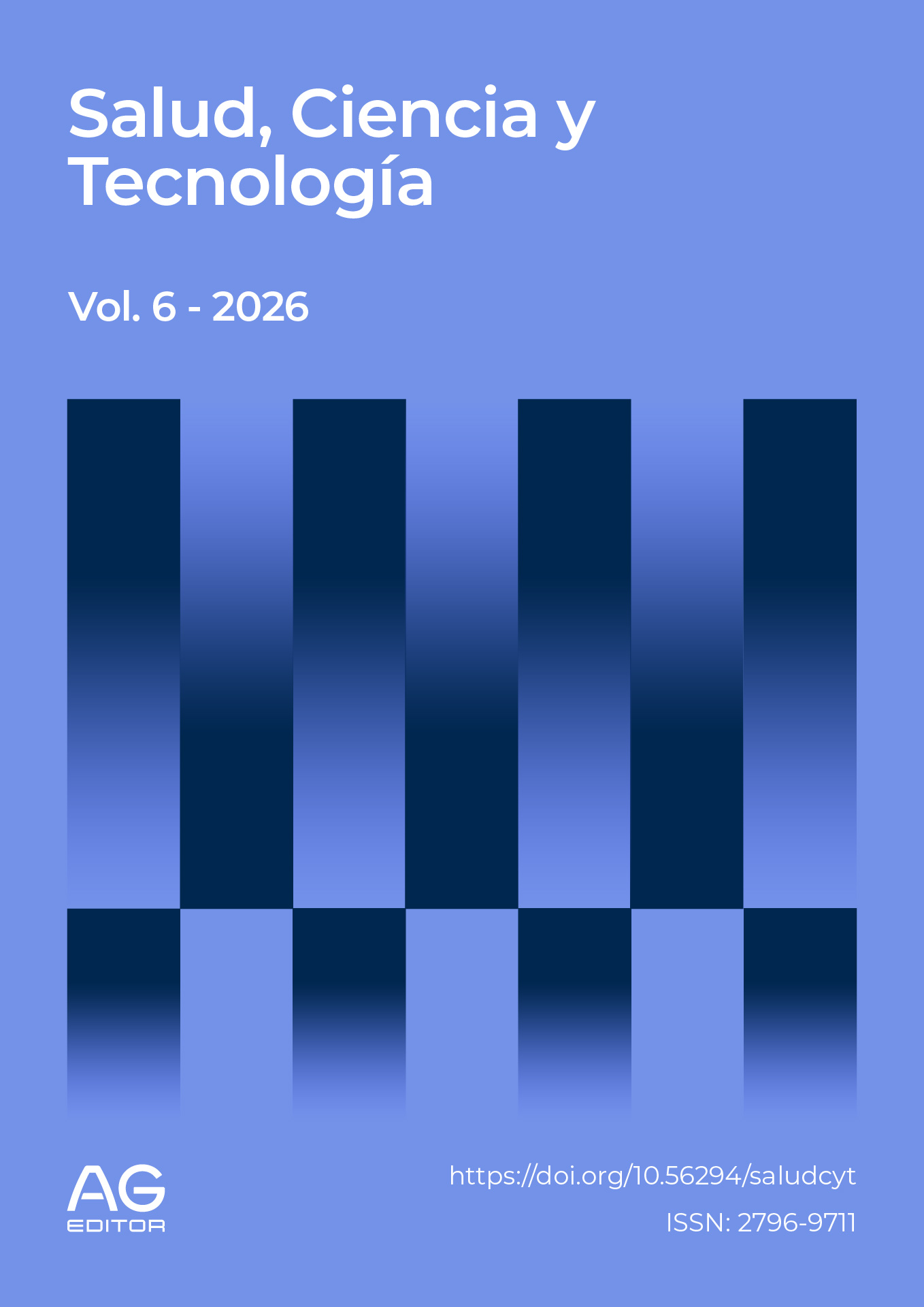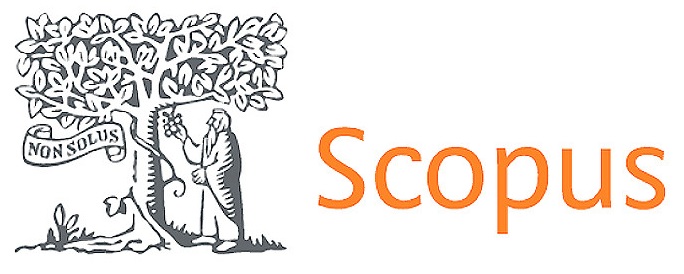Stress and burnout syndrome in healthcare personnel: diagnosis and prevention strategies
DOI:
https://doi.org/10.56294/saludcyt20262571Keywords:
Work stress, burnout, healthcare personnel, preventionAbstract
Introduction: burnout syndrome is a global occupational crisis that seriously affects the mental health of healthcare workers and the quality of medical care. The COVID-19 pandemic has intensified this phenomenon, highlighting the urgent need for effective diagnosis and prevention strategies.
Objective: to analyse the prevalence, risk factors, diagnostic tools, and intervention strategies for burnout syndrome in healthcare personnel, based on recent scientific evidence.
Method: a systematic review of the scientific literature (2019–2024) was conducted following PRISMA guidelines. International databases (PubMed, Scopus, Cochrane, SciELO) were consulted, selecting 28 studies of high methodological quality that evaluated prevalence, risks, instrument validity, and the effectiveness of preventive interventions.
Results: the overall prevalence of burnout among healthcare workers was 39%, reaching up to 59.5 % among nurses during the pandemic. The main risk factors were workplace bullying (OR: 4.05–15.01), low job satisfaction (OR: 5.05) and high perceived stress (OR: 4.21). Among the diagnostic instruments, the Maslach Burnout Inventory (MBI) and the Oldenburg Burnout Inventory (OLBI) showed the best psychometric properties. Mindfulness-based and coaching interventions moderately reduced burnout (SMD: -0.44).
Conclusions: burnout is a multifactorial problem where organisational causes predominate. It is recommended to implement preventive institutional policies, strengthen workplace wellbeing and standardise diagnostic tools to improve the sustainability of the healthcare system.
References
1. Osorio-Ordoñez CC, Ponce-Palacios Z. Explorando el vínculo entre el estrés, la satisfacción laboral y el agotamiento en trabajadores del campo. Poliantea. Revista Poliantea. 2023;18(1). http://dx.doi.org/10.15765/pata.v18i1.3959
2. Cano-García M, Ruiz-Blandòn DA, Vergara-Velez I, Chaverra-Gil LC. Impacto del estrés laboral en el bienestar psicológico del personal de un hospital público de medellín, Colombia. Ciencia y enfermería. 2023;29. http://dx.doi.org/10.29393/ce29-31iemv50031 DOI: https://doi.org/10.29393/CE29-31IEMV50031
3. López MC, Morales HL, Lombardero L, Sosa J, Iturburu G, Deleonardis J, Crupkin AC, Menone M. Del desgaste mental al agotamiento celular. Estudio preliminar de la relación entre estrés psicológico y estrés oxidativo. Revista Argentina de Ciencias del Comportamiento (RACC). 2024;16(3):199-200. https://psykebase.es/servlet/articulo?codigo=9833432
4. Alonso Rodríguez S. Análisis de la relación entre el estrés laboral, la inteligencia emocional, y el síndrome de burnout. 2025. https://n9.cl/ozqh8f
5. Veloz Salgado DA, Rivera Pilataxi SM. Trastornos emocionales del personal de enfermería antes situaciones laborales estresantes. 2024. http://dspace.unach.edu.ec/handle/51000/13494
6. Lucas Oliver E, Tárraga López PJ, Tárraga Marcos A. Trastornos adaptativos y su manejo desde atención primaria. Journal of Negative and No Positive Results. 2023 Sep;8(3):568-85. https://dx.doi.org/10.19230/jonnpr.4909
7. Avila Vera JL. Estrategias de prevención del estrés laboral en el personal de salud: revisión de alcance 2018-2022. Pentaciencias. 2023;5(3):719–32. http://dx.doi.org/10.59169/pentaciencias.v5i3.605 DOI: https://doi.org/10.59169/pentaciencias.v5i3.605
8. Nagarajan R, Ramachandran P, Dilipkumar R, Kaur P. Global estimate of burnout among the public health workforce: a systematic review and meta-analysis. Hum Resour Health. 2024;22(1):30. http://dx.doi.org/10.1186/s12960-024-00917-w DOI: https://doi.org/10.1186/s12960-024-00917-w
9. Cunningham TR, Chosewood LC, Davis JG, Rochel de Camargo K. Health worker mental health: Addressing the current crisis and building a sustainable future. Am J Public Health. 2024;114(S2):132–3. http://dx.doi.org/10.2105/AJPH.2024.307586 DOI: https://doi.org/10.2105/AJPH.2024.307586
10. Fekih-Romdhane F, Harb F, Al Banna S, Obeid S, Hallit S. Prevalence and risk factors of burnout symptoms among nurses during the COVID-19 pandemic: an updated systematic review and meta-analysis. Hum Resour Health. 2025;23(1):48. http://dx.doi.org/10.1186/s12960-025-01012-4 DOI: https://doi.org/10.1186/s12960-025-01012-4
11. Galanis P, Vraka I, Fragkou D, Bilali A, Kaitelidou D. Nurses’ burnout and associated risk factors during the COVID-19 pandemic: A systematic review and meta-analysis. J Adv Nurs. 2021;77(8):3286–302. http://dx.doi.org/10.1111/jan.14839 DOI: https://doi.org/10.1111/jan.14839
12. Mohr DC, Elnahal S, Marks ML, Derickson R, Osatuke K. Tendencias del síndrome de burnout entre los profesionales sanitarios estadounidenses. JAMA Netw Open. 2025;8(4):e255954. Disponible en: http://dx.doi.org/10.1001/jamanetworkopen.2025.5954 DOI: https://doi.org/10.1001/jamanetworkopen.2025.5954
13. Liu N, Plouffe RA, Liu JJW, Nouri MS, Saha P, Gargala D, et al. Determinants of burnout in Canadian health care workers during the COVID-19 pandemic. Eur J Psychotraumatol. 2024;15(1):2351782. http://dx.doi.org/10.1080/20008066.2024.2351782 DOI: https://doi.org/10.1080/20008066.2024.2351782
14. Maunder RG, Heeney ND, Jeffs LP, Wiesenfeld LA, Hunter JJ. A longitudinal study of hospital workers’ mental health from fall 2020 to the end of the COVID-19 pandemic in 2023. Sci Rep. 2024;14(1):26137. http://dx.doi.org/10.1038/s41598-024-77493-5 DOI: https://doi.org/10.1038/s41598-024-77493-5
15. De Hert S. Burnout in healthcare workers: Prevalence, impact and preventative strategies. Local Reg Anesth . 2020;13:171–83. http://dx.doi.org/10.2147/LRA.S240564 DOI: https://doi.org/10.2147/LRA.S240564
16. Ancco Choquecondo RD, Calderón Paniagua DG, Quispe Vilca GR, Pacompia Toza JF, Quispe Vilca J del R. Síndrome de burnout y desempeño laboral en el sector salud del Perú. Revista Vive. 2023;6(17):491–502. http://dx.doi.org/10.33996/revistavive.v6i17.240 DOI: https://doi.org/10.33996/revistavive.v6i17.240
17. Acosta-Román M, Saldaña-Chafloque CF, Poma-Poma DI, Olivas-Alvarez AB, Nieva-Villegas LM. Estrés laboral en la unidad de cuidados intensivos de un hospital de la sierra peruana. Revista Vive. 2023;6(18). http://dx.doi.org/10.33996/revistavive.v6i18.265 DOI: https://doi.org/10.33996/revistavive.v6i18.265
18. Martinez Jines SM, Chantong Cabrera KL, Naranjo Rios EL, Parra Martinez JC. Estudio del Burnout y la satisfacción laboral en profesionales de la salud en un hospital en Ecuador. Revista Vive. 2024;7(21):909–20. http://dx.doi.org/10.33996/revistavive.v7i21.348 DOI: https://doi.org/10.33996/revistavive.v7i21.348
19. Batanda I. Prevalence of burnout among healthcare professionals: A survey at fortportal regional referral hospital. Research Square. 2023. http://dx.doi.org/10.21203/rs.3.rs-3714233/v1 DOI: https://doi.org/10.21203/rs.3.rs-3714233/v1
20. Sipos D, Goyal R, Zapata T. Abordando el síndrome de burnout en el personal sanitario: realidades actuales y estrategias de mitigación. Lancet Reg Health Eur. 2024;42(100961):100961. Disponible en: http://dx.doi.org/10.1016/j.lanepe.2024.100961 DOI: https://doi.org/10.1016/j.lanepe.2024.100961
21. Amiri S, Mahmood N, Mustafa H, Javaid SF, Khan MA. Occupational risk factors for burnout syndrome among healthcare professionals: A global systematic review and meta-analysis. Int J Environ Res Public Health. 2024;21(12):1583. http://dx.doi.org/10.3390/ijerph21121583 DOI: https://doi.org/10.3390/ijerph21121583
22. West CP, Dyrbye LN, Shanafelt TD. Physician burnout: contributors, consequences and solutions. J Intern Med . 2018;283(6):516–29. http://dx.doi.org/10.1111/joim.12752 DOI: https://doi.org/10.1111/joim.12752
23. Hernández Baquero DM. Revisión sistemática sobre la percepción del estrés laboral en profesionales de enfermería que laboran en consulta externa: Análisis del contexto latinoamericano y en Ecuador. Revista Vive. 2025;8(23):532–51. http://dx.doi.org/10.33996/revistavive.v8i23.395 DOI: https://doi.org/10.33996/revistavive.v8i23.395
24. Veliz Huanca FS, Mucha López DC, Guzmán Meza ME. Trabajo remoto, estrés percibido y salud mental durante la pandemia por COVID-19. Revista Vive. 2024;7(21):894–908. http://dx.doi.org/10.33996/revistavive.v7i21.347 DOI: https://doi.org/10.33996/revistavive.v7i21.347
25. Kelly LA, Gee PM, Butler RJ. Impact of nurse burnout on organizational and position turnover. Nurs Outlook. 2021;69(1):96–102. http://dx.doi.org/10.1016/j.outlook.2020.06.008 DOI: https://doi.org/10.1016/j.outlook.2020.06.008
26. Yslado Méndez RM, Sánchez-Broncano J, De La Cruz-Valdiviano C, Quiñones-Anaya I, Reynosa Navarro E. Propiedades psicométricas del Inventario de Burnout de Maslach en profesionales de la salud, Región Ancash, Perú. F1000Res. 2023;12:1253. Disponible en: http://dx.doi.org/10.12688/f1000research.139258.2 DOI: https://doi.org/10.12688/f1000research.139258.1
27. Barton MA, Lall MD, Johnston MM, Lu DW, Nelson LS, Bilimoria KY, et al. Fiabilidad y validez de un inventario abreviado de agotamiento profesional de Copenhague mediante análisis factorial exploratorio y confirmatorio. J Am Coll Emerg Physicians Open. 2022;3(4):e12797. Disponible en: http://dx.doi.org/10.1002/emp2.12797 DOI: https://doi.org/10.1002/emp2.12797
28. Shoman Y, Marca SC, Bianchi R, Godderis L, van der Molen HF, Guseva Canu I. Propiedades psicométricas de las medidas de burnout: una revisión sistemática. Epidemiol Psychiatr Sci. 2021;30(e8):e8. Disponible en: http://dx.doi.org/10.1017/S2045796020001134 DOI: https://doi.org/10.1017/S2045796020001134
29. Haslam A, Tuia J, Miller SL, Prasad V. Systematic review and meta-analysis of randomized trials testing interventions to reduce physician burnout. Am J Med. 2024;137(3):249-257.e1. http://dx.doi.org/10.1016/j.amjmed.2023.10.003 DOI: https://doi.org/10.1016/j.amjmed.2023.10.003
30. Ong NY, Teo FJJ, Ee JZY, Yau CE, Thumboo J, Tan HK, et al. Efectividad de las intervenciones basadas en mindfulness en el bienestar del personal sanitario: una revisión sistemática y un metaanálisis. Gen Psychiatr. 2024;37(3):e101115. Disponible en: http://dx.doi.org/10.1136/gpsych-2023-101115 DOI: https://doi.org/10.1136/gpsych-2023-101115
31. Wang Q, Wang F, Zhang S, Liu C, Feng Y, Chen J. Effects of a mindfulness-based interventions on stress, burnout in nurses: a systematic review and meta-analysis. Front Psychiatry. 2023;14:1218340. http://dx.doi.org/10.3389/fpsyt.2023.1218340 DOI: https://doi.org/10.3389/fpsyt.2023.1218340
32. Dionicio-Escalante E-R, Mendez-Vergaray J, Flores E. Estrategias de afrontamiento al síndrome de burnout en médicos-docentes universitarios en postpandemia. Revista Vive. 2023;6(18):780–801. http://dx.doi.org/10.33996/revistavive.v6i18.263 DOI: https://doi.org/10.33996/revistavive.v6i18.263
33. Li LZ, Yang P, Singer SJ, Pfeffer J, Mathur MB, Shanafelt T. Agotamiento profesional en enfermería y seguridad, satisfacción y calidad de la atención del paciente: Una revisión sistemática y un metaanálisis. JAMA Netw Open. 2024;7(11):e2443059. Disponible en: http://dx.doi.org/10.1001/jamanetworkopen.2024.43059 DOI: https://doi.org/10.1001/jamanetworkopen.2024.43059
34. Gea Izquierdo E. Neumonía: La pandemia ignorada. Revista Vive. 2021;4(12):437–42. http://dx.doi.org/10.33996/revistavive.v4i12.104 DOI: https://doi.org/10.33996/revistavive.v4i12.104
35. Tenesaca Serpa A, Andrade Campoverde D. Genes implicados en la gravedad de la infección por SARS-cov- 2. Revista Vive. 2021;4(11):305–18. http://dx.doi.org/10.33996/revistavive.v4i11.95. DOI: https://doi.org/10.33996/revistavive.v4i11.95
Published
Issue
Section
License
Copyright (c) 2026 David Max Olivares Álvares, Mario Heimer Flórez Guzmán, Juan José García Sarria, Leibniz Huxlay Flórez Guzmán, Mercy Lilliana Borbón Hoyos (Author)

This work is licensed under a Creative Commons Attribution 4.0 International License.
The article is distributed under the Creative Commons Attribution 4.0 License. Unless otherwise stated, associated published material is distributed under the same licence.



